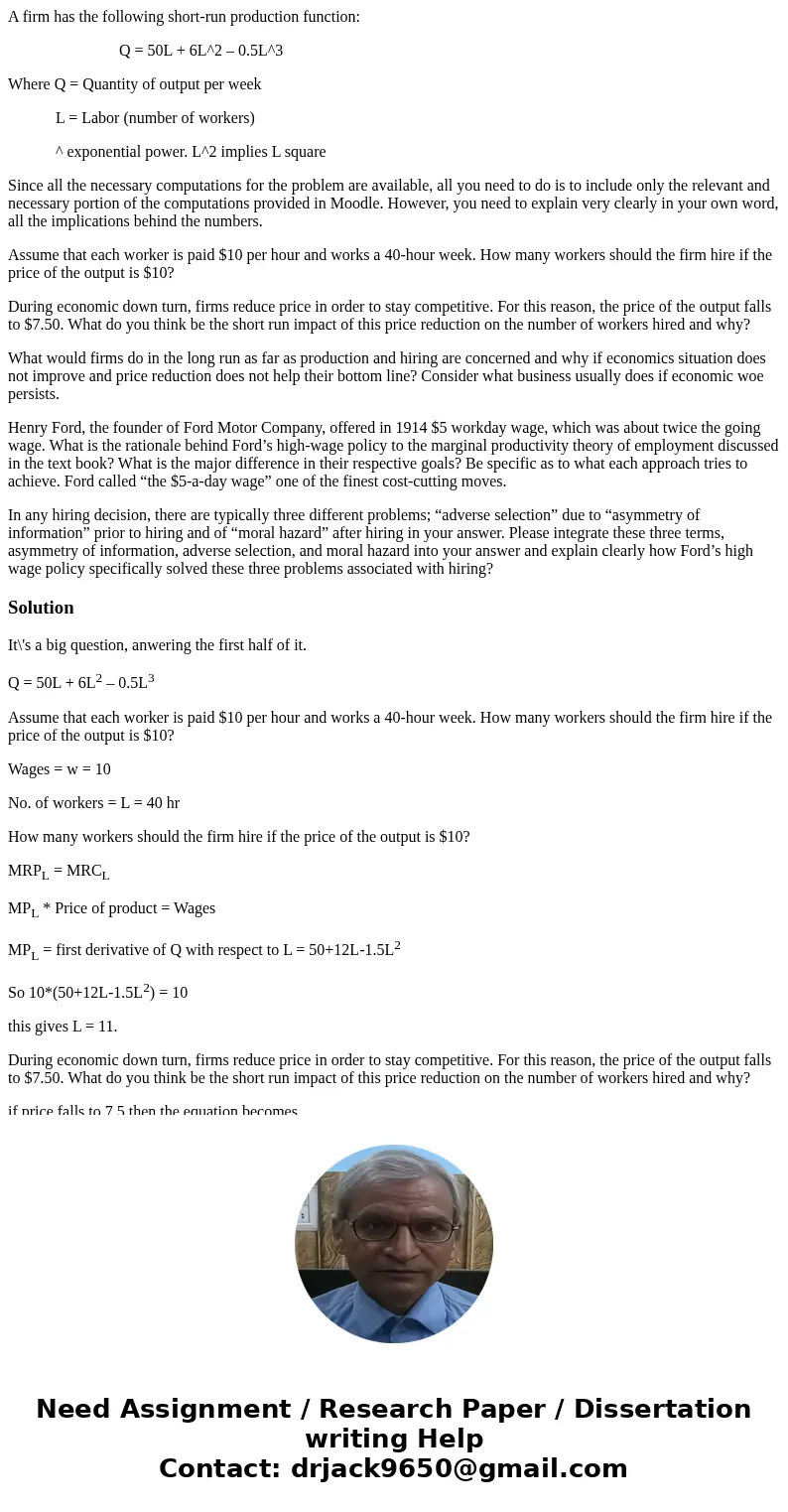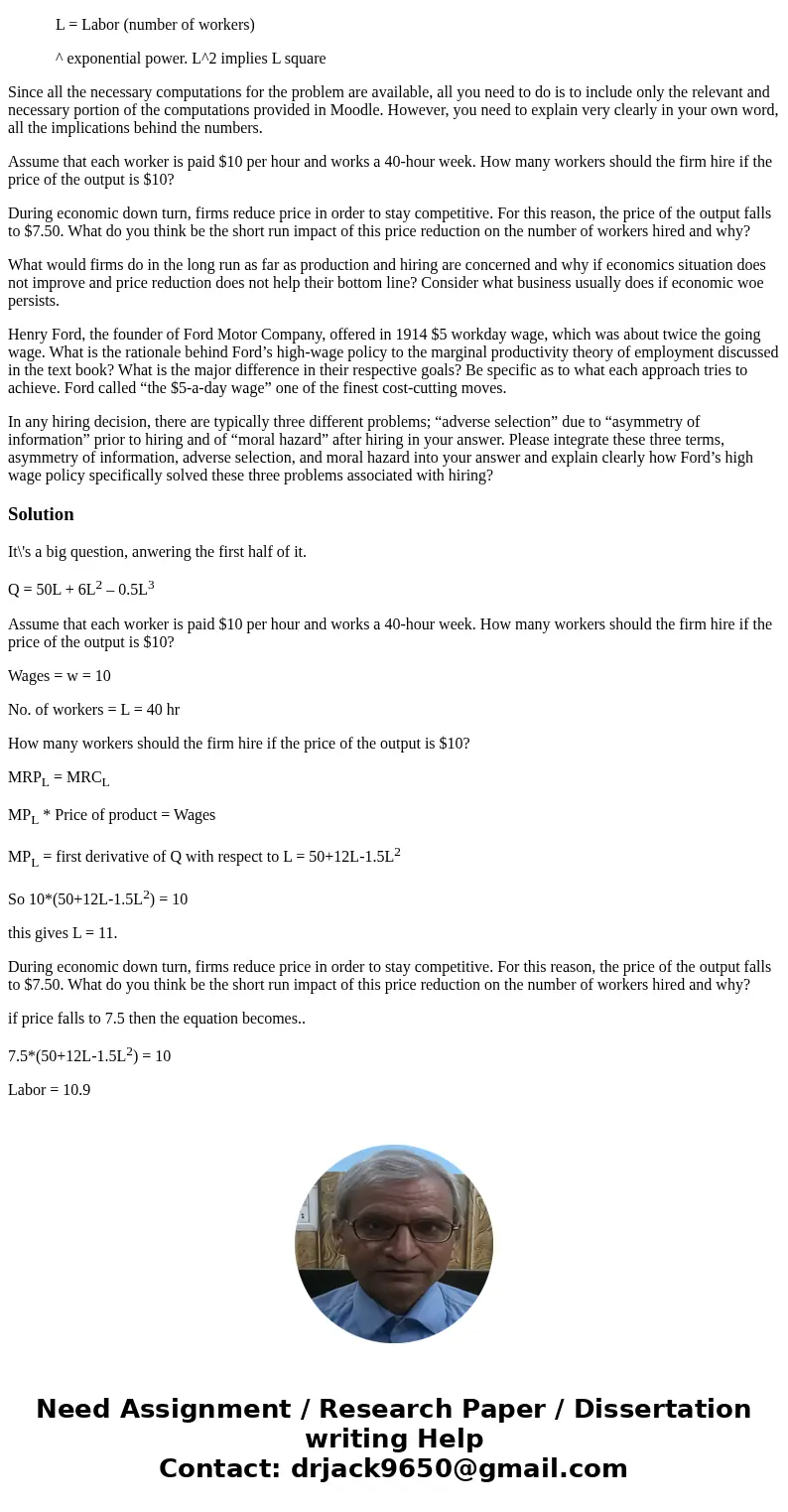A firm has the following shortrun production function Q 50L
A firm has the following short-run production function:
Q = 50L + 6L^2 – 0.5L^3
Where Q = Quantity of output per week
L = Labor (number of workers)
^ exponential power. L^2 implies L square
Since all the necessary computations for the problem are available, all you need to do is to include only the relevant and necessary portion of the computations provided in Moodle. However, you need to explain very clearly in your own word, all the implications behind the numbers.
Assume that each worker is paid $10 per hour and works a 40-hour week. How many workers should the firm hire if the price of the output is $10?
During economic down turn, firms reduce price in order to stay competitive. For this reason, the price of the output falls to $7.50. What do you think be the short run impact of this price reduction on the number of workers hired and why?
What would firms do in the long run as far as production and hiring are concerned and why if economics situation does not improve and price reduction does not help their bottom line? Consider what business usually does if economic woe persists.
Henry Ford, the founder of Ford Motor Company, offered in 1914 $5 workday wage, which was about twice the going wage. What is the rationale behind Ford’s high-wage policy to the marginal productivity theory of employment discussed in the text book? What is the major difference in their respective goals? Be specific as to what each approach tries to achieve. Ford called “the $5-a-day wage” one of the finest cost-cutting moves.
In any hiring decision, there are typically three different problems; “adverse selection” due to “asymmetry of information” prior to hiring and of “moral hazard” after hiring in your answer. Please integrate these three terms, asymmetry of information, adverse selection, and moral hazard into your answer and explain clearly how Ford’s high wage policy specifically solved these three problems associated with hiring?
Solution
It\'s a big question, anwering the first half of it.
Q = 50L + 6L2 – 0.5L3
Assume that each worker is paid $10 per hour and works a 40-hour week. How many workers should the firm hire if the price of the output is $10?
Wages = w = 10
No. of workers = L = 40 hr
How many workers should the firm hire if the price of the output is $10?
MRPL = MRCL
MPL * Price of product = Wages
MPL = first derivative of Q with respect to L = 50+12L-1.5L2
So 10*(50+12L-1.5L2) = 10
this gives L = 11.
During economic down turn, firms reduce price in order to stay competitive. For this reason, the price of the output falls to $7.50. What do you think be the short run impact of this price reduction on the number of workers hired and why?
if price falls to 7.5 then the equation becomes..
7.5*(50+12L-1.5L2) = 10
Labor = 10.9


 Homework Sourse
Homework Sourse